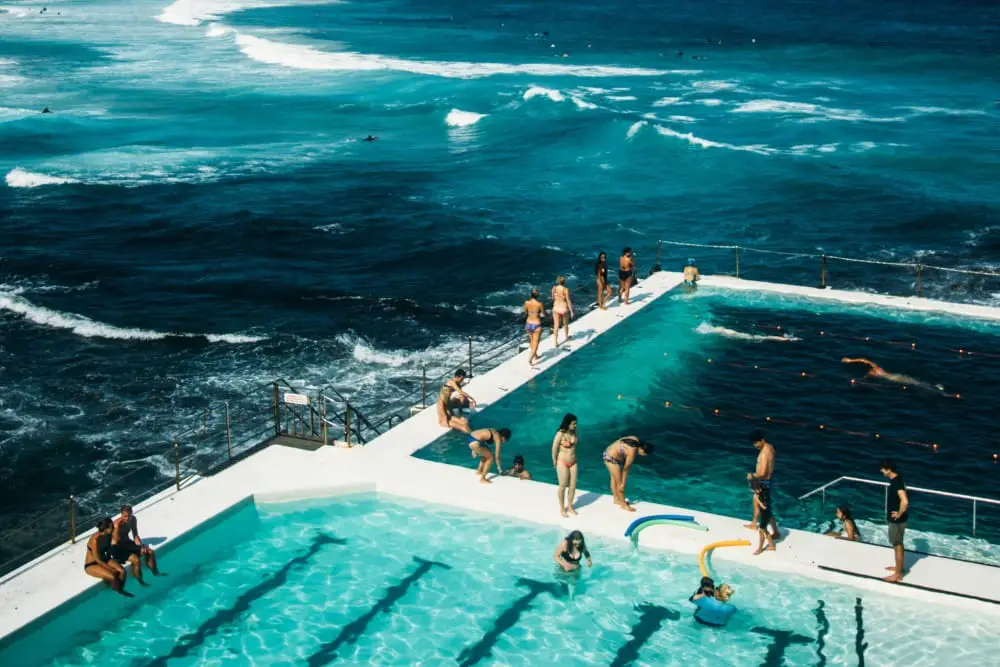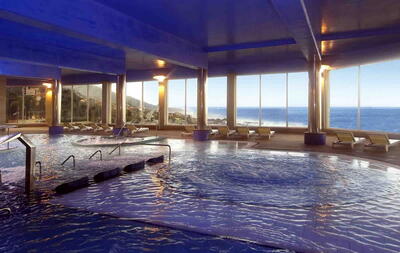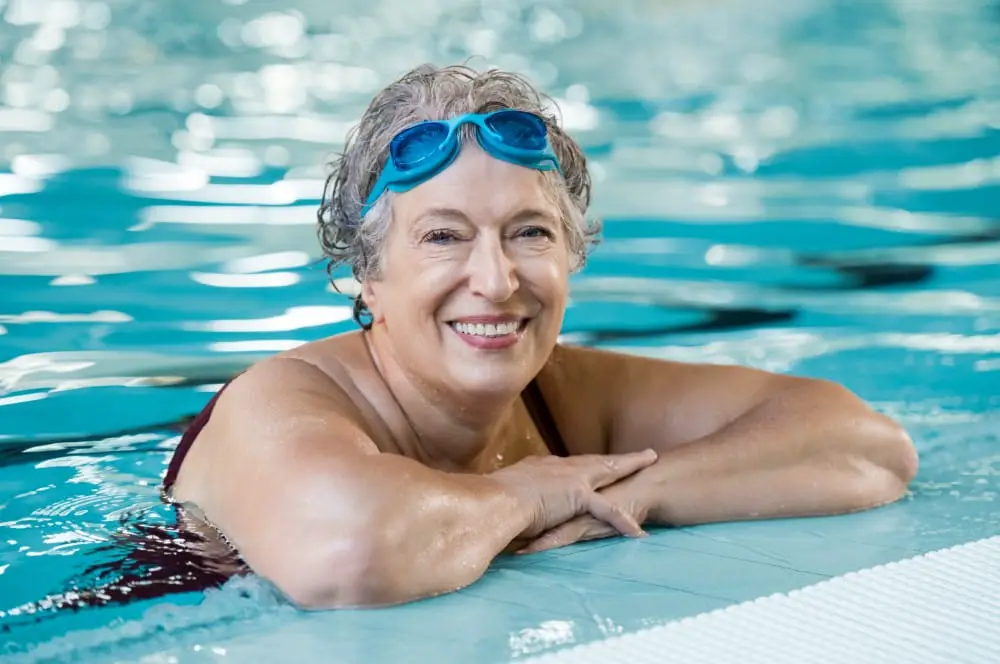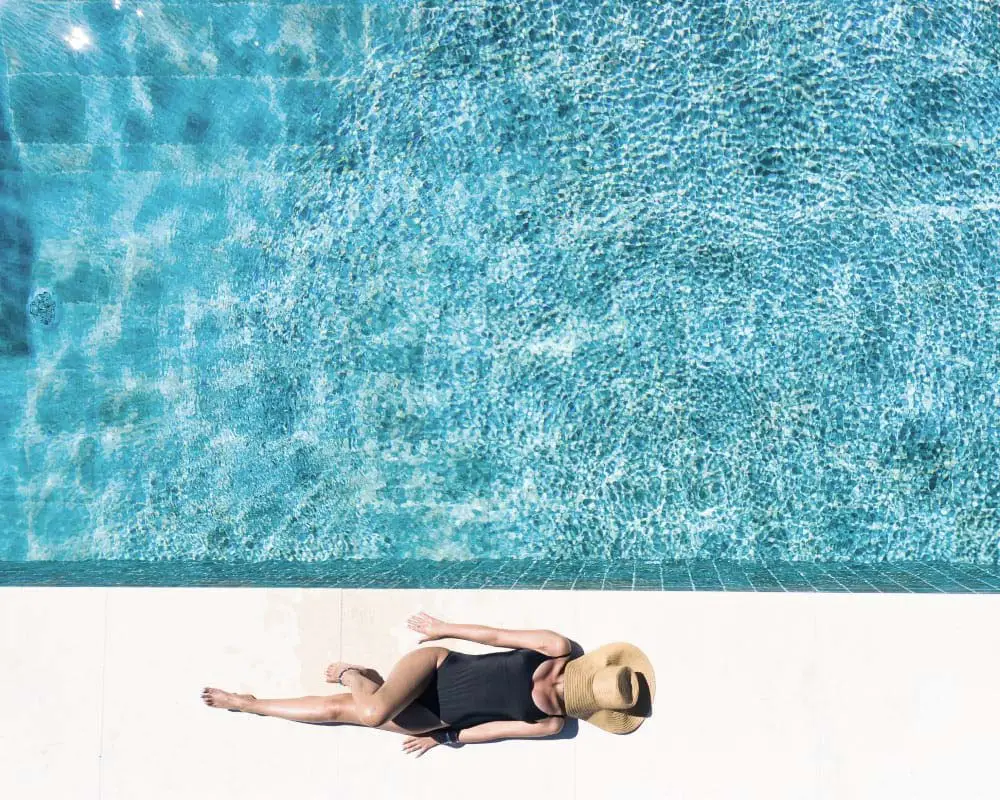
What is thalassotherapy?
The word thalassotherapy is composed of the Greek word thálassa, which means sea, and the suffix -therapy, which implies healing, treatment or care. Thus, the Real Academia de la Lengua Española (RAE) defines thalassotherapy as the therapeutic use of baths or sea air.
"Thalassotherapyis a neologism proposed by La Bonnardiere in 1867 to describe the therapeutic use of seawater and all its components and organisms including water, salts, algae, phytoplankton, zooplankton, krill, fish and marine mammals," recall Alberto Cerrada, a specialist in Medical Hydrology and Geriatrics, and N. Tejera, of Lóreal Research Department, in the article Animal organic compounds in thalassotherapy, microorganisms and macroorganisms from the sea in human health published in the journal of the Sociedad Española de Hidrología Médica.
Or, put another way, thalassotherapy consists of the simultaneous use in a marine environment and under medical supervision of the benefits of marine elements for a preventive or curative purpose, including seawater, marine climate, sea muds and seaweeds and other substances of marine origin, as explained by A. Cerrada and Dermatology specialist Alejandra Lepore in Thalassotherapy, review of medical articles published in the last 20 years,
Although beware, because thalassotherapy in the 21st century is this and much more. In fact, this form of hydrotherapy seems that it will not stop evolving: "The primitive idea of oligotherapy described by Ballaguer in 1877 as well as the principle of thalasoecology (way of reunion with nature, the sea and its animals) are joined by terms such as complete thalassotherapy (C.T) or integrated thalassotherapy (T.I) that would include treatments with seawater, climatotherapy, waves, tides, hydroponic cures, silt, algae, microorganisms, phytoplankton, and zooplankton as well as whale watching, boat cures and therapies assisted with sea animals", according to A. Cerrada and N. Tejeda.

Are you looking for a sea salt center to take care of your health?
HAVE A LOOK TO OUR WEB BROWSER TO FIND SEA WATER CENTERS IN SPAIN!
Diseases that improve with thalassotherapy
Skin, rheumatic and respiratory problems
Thalassotherapy is highly recommended to treat skin-related problems (dermatology) and to soothe ailments in bones, joints, muscles, ligaments and tendons associated with the locomotor system and rheumatism(rheumatology). According to A. Cerrada and A. Lepore, scientific studies show a statistically significant relationship between thalassotherapy and its beneficial effects in treating skin, musculoskeletal and autoimmune diseases, as well as in conditions of the respiratory system, the immune system (immunology), certain infections and some children's ailments (pediatrics).
Cardiovascular, endocrine system disorders, stress and others
Their analysis also observes a statistically significant relationship of improvement in patients with cardiovascular, endocrine system, neurological and neurological conditions, odontological, digestive, gynecological, urinary system (urology) and stress-related after undergoing thalassotherapy treatments.
For its part, the Spanish Thalassotherapy Society (SET) assures that thalassotherapy "improves physical appearance", contributes to "muscle relaxation and stress relief", and "causes a lowering of blood pressure and a toning effect" beneficial to our body, among other goodness.
But "although the efficacy of the sea in the cure and improvement of the symptomatology in different ailments has been amply recognized by tradition", this does not mean that thalassotherapy magically cure the ailments described here. It means that it influences or can influence in its improvement. As A. Cerrada and A. Lepore insist, "more studies and information are needed".
The most beneficial elements of thalassotherapy
For SET "the sea is a real spa with an infinity of beneficial elements" for human beings, and "its key as a therapeutic agent to improve our health and our physical appearance" lies in the combination and use of the chemical elements present in different elements of the marine ecosystem and the coastal climate. The thalasso is a perfect place to fight stress, to relax quickly andsoothe your nerves, but also to strengthen our health and improve our appearance.
Among the most relevant and beneficial elements of thalassotherapy are:
Sea water
Sea water is the main ingredient of thalassotherapy. It is used to perform the treatments and operate the thalasso facilities. But why is seawater beneficial?
Sea water.
Well, among other things, by the elements that compose it and that, as recalls Teresa Pacheco in Tribuna Termal, are "practically all the chemical elements of the periodic table, although sodium chloride (NaCl) represents 80% of the salts in solution. The rest are sulfates, bicarbonates, magnesium, calcium, potassium, bromine, boron, fluorine and 79 trace elements more, with silicon being the most important" plus "nitrogen, oxygen and carbon dioxide".
According to SET, seawater is rich in sodium chloride,magnesium chloride and potassium chloride, substances similar to those found in blood plasma. More poetically put and in the words of T. Pacheco: "seawater runs through our veins, as it has a composition and concentration of mineral salts and trace elements almost identical to our blood plasma". For this reason the human body absorbs these substances easily by osmosis and, once absorbed, these substances can cause an improvement in the health of the human body in question.
In the same direction points to the conclusion of the article (which translated into English would be something like salts on the skin) on mineral or thermal waters and seawater. In it José Manuel Carbajo, member of the UCM-911757 research group of Medical Hydrology of the Complutense University of Madrid (UCM), highlights that "salt waters act through an osmosis mechanism that is capable of activating or inhibiting apoptosis and cell necrosis" and explains how certain proteins influence this process, among other things.
Algae
Algae are the thallophytes plants that live in water, either marine or fresh. Algae are rich in "minerals, vitamins and proteins" and are used in thalassotherapy for therapeutic purposes since, among other things "they help to protect our body from bacteria and viruses", as SET reminds us.
Algae are usually used in thalassotherapy treatments in the form of coatings and creams, although depending on the technique it can acquire other presentations. Some people refer to treatments and therapies that use algae as the main ingredient as algotherapy, but in 2020 seaweedtherapy is not a term included in the RAE (as are thalassotherapy, hydrotherapyor spa, among others).
Yes, we do find the term algotherapy in English. In English, the word seaweedtherapy is used to refer to those treatments that use "hot seaweed wraps" to "relieve pain and stress" thanks to their "anti-inflammatory and analgesic properties," according to the glossary compiled by the European Spas Association or European Spas Association (ESPA).

Marine muds and phages
Along with algae, muds and sludges are two of the most used elements in thalassotherapy. Mud and sludge are two similar elements, but not exactly the same. Technically, a mud is a mixture of soil and water that is normally formed by falling rainwater on the ground; while a mud is a glutinous mud (a mixture of soil and water) that is usually formed with earthy sediments in places where there is water retention.
So what is the difference between mud and sludge if both are basically water and soil? Well, technically, that mud is sticky and mud is not or not so much, which may imply that for certain therapeutic techniques it is better to use one or the other. It all depends on the results you want to achieve. The fact is that, like sea water and the algae that grow in it, muds and sludges also have an endless number of properties and beneficial elements for the human body.
Both muds and sludges are included in the group of peloids, traditionally used for the cure and relief of patients with diseases related to the locomotor system (rheumatism, arthritis and others). Its use is so extensive that we have dedicated another article to see it in depth. If you are interested, continue reading facial treatments and body treatments.
Limes, peats, clays, biogleas, sapropelli and gyttja
The slimes, the peats, the clays, the biogleas, the sapropelli and the gyttjaare included, together with the muds and sludges in the group of peloids. Peloids are, to be understood, a mass, paste or slurry made from water and other material with certain components that make it beneficial to the human body and useful in therapy and thalassotherapy treatments.
Technically, peloids are "heterogeneous systems, with solid phases formed by a mixture of inorganic and/or organic solids suspended or wetted with a liquid phase, formed by a solution of ions and molecules of inorganic and organic origin whose solvent is water". They are thus defined in the article Clay vs Peat. Solid phase of peloids by Francisco Armijo, of the Professional School of Medical Hydrology of the Complutense University of Madrid (UCM), and Francisco Maraver, of the Department of Radiology, Rehabilitation and Physiotherapy of the same.
That said. To learn more about peloids and other compounds that you can spread on your face and body for relaxing, beautifying or healing purposes, see facial treatments and body treatments. There are many options and possibilities!
The plankton: phytoplankton, zooplankton and krill
To speak of plankton is to speak of a group of living microorganisms, plants and/or animals, almost always very small or tiny, that float and are passively displaced in salty or fresh waters. In reference to thalassotherapy, plankton is a very interesting marine element because it contains a large amount of vitamins B and E which, among other things, prevent the formation of free radicals, nourish the skin and provide extra glycoproteins, as highlighted by SET.

Are you looking for a thalassotherapy center to take care of your health?
TAKE A LOOK TO OUR WEB BROWSER TO FIND SEA SALT SPAS IN SPAIN!
FITOPLANCTON
The phytoplankton is a type of plankton consisting predominantly of plant organisms or microscopic algae. This type of plankton "is rich in vitamins, minerals and antioxidant compounds responsible for neutralizing free radicals", according to A. Cerrada and N. Tejera, who also point out that "tests on breast and colon cancer cells with these derivatives have shown in vitro effectiveness". For its part, SET highlights that phytoplacton "promotes energy, CO2 formation and helps the immune system".
ZOOPLANCTON
Zooplankton is a type of plankton characterized by the predominance of animal organisms such as, for example, copepods, although its composition may also include jellyfish, invertebrates, mollusks, echinoderms, fish larvae or other crustaceans. The krill krilles a type of zooplankton that you may be familiar with because it is the main food of whales.
KRIL
In essence, krill is a school of planktonic crustaceans similar to shrimp "from which is extracted an oil rich in antioxidants and phospholipids containing omega-3 fatty acids, eicosapentanoic acid (EPA) and docosahexanoic acid (DHA) in the form of phospholipids, a fundamental element in the composition of cell membranes and tissues such as the brain, contributing to their stability. In high doses, they can influence blood coagulation, and can act as a potent anticoagulant", as A. Cerrada and N. Tejera point out. The experts also point out that the "enzymes from the Antarctic krill Euphausia superba Dana have demonstrated their usefulness as ulcer debridement" and that "they seem to have beneficial effects on joint pain, control of cholesterol and triglycerides and premenstrual syndrome".
The marine ecosystem
The mere presence of the sea, with all that it entails, is healthy for almost everyone. As SET reminds us, enjoying the sea breeze or taking a walk on the beach oxygenates the skin, helps eliminate toxins and breathe better. It also strengthens bones, removes impurities naturally (sand is a fantastic exfoliant!), improves circulation and gives strength to muscles and joints (that's why it's so healthy to walk barefoot along the seashore). Not to mention the excitement, with the consequent segregation of endorphins and mood boost that comes with it, of seeing marine animals in the wild, whether snorkeling, scuba diving, or spotting cetaceans from a catamaran.
To that should be added that many people have to travel to get to the sea. This usually involves taking a few days off or, at least, some time away from work and routines, which undoubtedly helps to disconnect. Disconnect, relax, de-stress, in short, stop. Stop for a second to see the sea and breathe, and that alone has a beneficial effect on anyone suffering from stress or anxiety.
What facilities does a thalasso have?
As with spas and health resorts, there are no specific facilities that make a thermal space a thalasso. The condition sin equa nonfor this is that thalassotherapy techniques are applied or, in other words, seawater and all that it entails (and, if possible, being in a marine ecosystem). But whatever it has, a thalasso will always be relaxing, an escape route designed to de-stress you.
Sea water pools with thermoludic circuit
However, the thalasso is almost always next to the sea to take advantage of its climate and ecosystem (the sea breeze, the beach sand, the sound of the waves, the visual beauty of the water, etc.). Also, in the thalasso there is usually a thermoludic hydrothermal circuit or ludic-thermal (or thermoludic or ludic-thermal pool) of water is marine, spread over one or more pools, indoor or outdoor, sometimes with breathtaking views.
This aquatic circuit, similar to that of a spa and similar to that presented by more and more health resorts, may have pressure jets, water beds, jacuzzis, water of different temperatures, etc. It can also be completed with marine steam baths (or direct baths in the sea) and resting areas, which generally overlook the ocean.

Subscribe to our newsletter and
Sea showers, salt saunas and solariums
In thalasso we can also find different types of showers (mist shower, vichy shower, contrast shower, etc.), pediluviums (for the feet), maniluviums (for the hands), flotation tanks, etc. Saunas of all types are also quite common, although the dry or Finnish sauna, the salt sauna (halogenerator) and the Turkish baths are the most common.
What massages, treatments and therapies are offered in a thalassotherapy center?
Before talking about the massages, treatments and therapies that are applied in thalassotherapy, it should be noted that there are two types of thalassotherapy techniques: natural techniques and artificial techniques.
Natural and artificial thalassotherapy techniques
The natural thalassotherapy techniques are those techniques that take place outdoors. They are techniques that take advantage of the natural elements found in the marine ecosystem (often free of charge). The most common natural thalassotherapy techniques are bathing in the sea, burying in the sand of the beach, walking by the sea (marine aerotherapy) or barefoot along the seashore, and sunbathing (heliotherapy).
The artificial thalassotherapy techniques are those techniques that take place inside thalassotherapy centers. The most important artificial thalassotherapy technique is immersion in seawater, more or less salty and with more or less salts, algae or sediments. In this section we would find the relaxation pools, the pressure jets and the whirlpool baths in seawater. The right combination of all of them will help you disconnect, reduce anxiety and sleep better.
Wraps and beeing covered with seaweed, mud and other sea products
In the thalassos an endless number of wrappings and coverings with marine elements are also made. For this reason, it is normal that a thalasso's menu of services includes treatments with algae, sludge, phage, silt, turba, clays, biogleas, sapropelli and gyttja. If you want to know more about how peloids (muds, etc). Just a whole underworld within the world of thalassotherapy!) are applied, don't miss our body treatments section.
Also, in the thalasso you can find a variety of salt and mud treatments, as well as plankton treatments (with phytoplankton, zooplankton and krill). Likewise, as in other mineral-medicinal water centers, there may be treatments based on drinking water or immersions, which will always or almost always be carried out under medical prescription.
Beauty treatments with marine elements
As in spas, beauty treatments of all kinds are offered in thalassotherapy centers. Among them you can find from marine collagen treatments for the skin, to treatments based on micronized shells or chitin (used in exfoliating treatments and peelings), whose chitosan or chitosan prevents water loss and provides elasticity, as A. Cerrada and N. Tejera point out. If you want to know more, we recommend you take a look at our facial treatments section.
Other thalassotherapy treatments and techniques with beautifying applications include natural pearls(rich in calcium, they are used in beauty treatments to treat blemishes, wrinkles, sagging and protect the skin from external aggressions), caviar (with firming and toning properties, it is used to restore radiance to the skin), and squid ink (very useful for treating depigmented skin).
Marine-inspired massages
And, of course, massages of all kinds can be found in a thalasso. Relaxing massages, sports massages, therapeutic massages, etc. Yours is to try the massages with mud and seaweeds and the underwater draining massages, indicated to activate the lymphatic drainage system.
Do you have to wear a cap, towel and flip-flops to a thalassotherapy center?
As with spas, it depends. Sometimes yes and sometimes you do not have to wear a hat, towel and flip-flops to a thalasso. It depends on the specific thalasso you want to use. In general, the use of the thalasso requires flip-flops (for hygiene reasons, so as not to step on the floor with bare feet) and a towel (for health reasons, so as not to get cold when going out and/or moving around the facilities). The cap depends on your specific policy.
We always recommend bringing flip-flops, a towel and a hat to any spa, thalasso or spa center just in case. But if you need to know if you need to bring these items to a specific thalasso, contact them, they have an e-mail and phone number for that purpose.

Are you looking for a thalassotherapy center to take care of your health?
HAVE A LOOK TO OUR WEB BROWSER TO FIND SEA SALT WATER CENTERS IN SPAIN!






